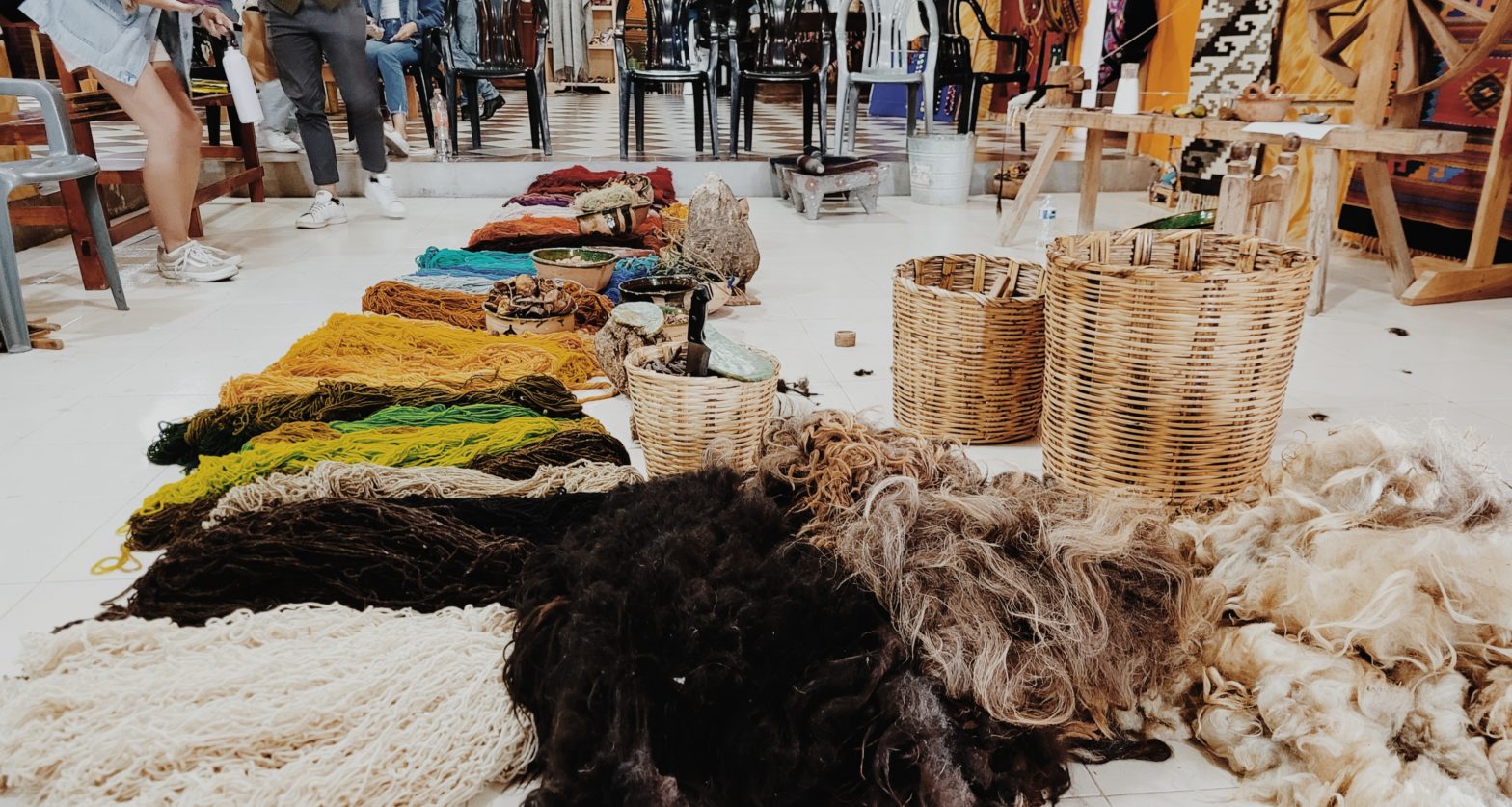Teotitlan del Valle. With a name like that, one would expect an archaeological masterpiece or something. For that very reason, I was quite underwhelmed when, after a bumpy 40-minute ride, the bus pulled up to a rather insignificant-looking building. Boy was I wrong. I walked in the door and immediately my eyes fixated on the walls covered in intricately hand-woven textiles, featuring every color imaginable. Low-and-behold my Spanish class brought me to learn the history (and how to make!) these pre-Hispanic artisanal masterpieces. Apparently, I need to learn not to jump to conclusions!
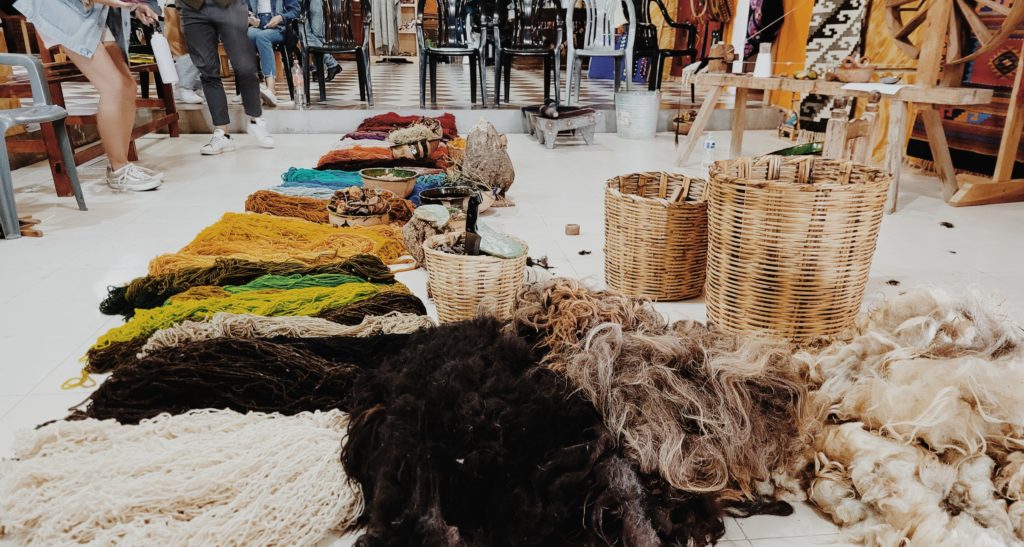
Becoming a Spin Master
While I was unable to sheer a sheep in this process, I sure experienced a whole lot more. After the wool (lana) is collected, it is time to comb out all the imperfections. Fun fact, pre-colonization, plants such as maguey, palm, and yucca, made up the fibers in the weaving process. Whatever the material, it is important for the wool/fiber to be as smooth as possible to spin into yarn. Following the traditional method, one paddle comb in my left hand and another in my right, I got to work. It was a rather simple job.
Riding a wave of confidence, I volunteered to take my now-combed wool to the spindle and distaff (keeping it old-school). The goal is to hold onto the yarn in one hand, pulling it away from the spindle. Your dominant hand is given the task of quickly spinning the spindle to create yarn. Easier said than done. My product ended up looking like my shedding cat rather than yarn. At least I tried, right?
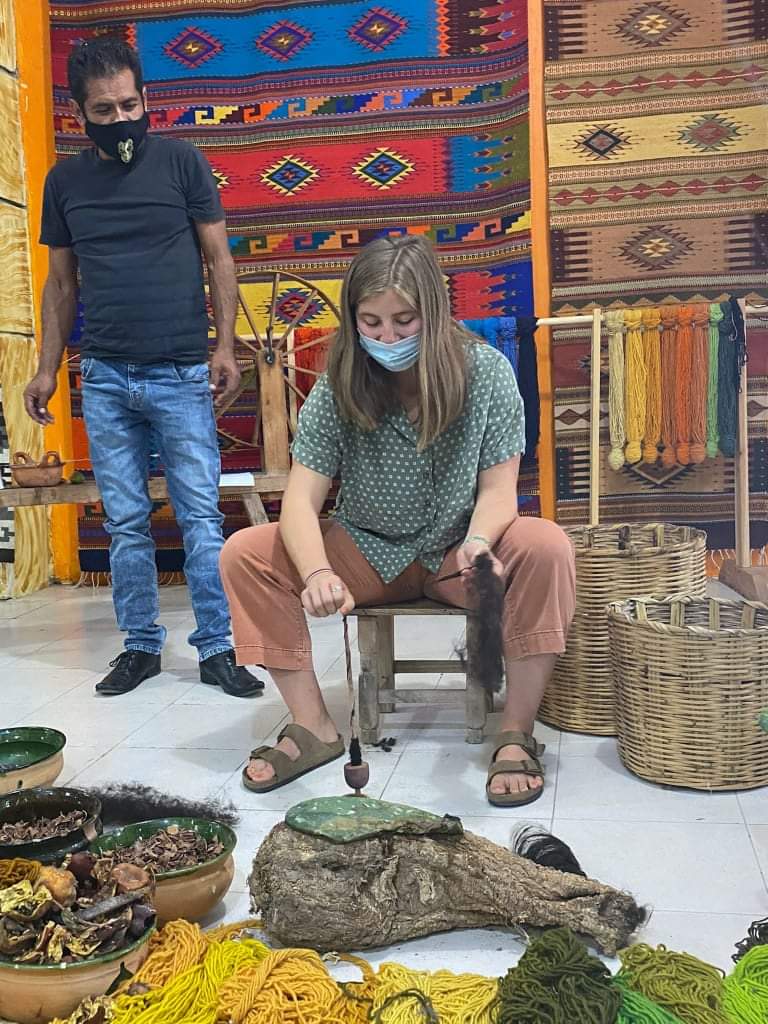
The invention of the spinning wheel now reigns supreme as the primary spinning tool, vastly accelerating the whole process. Some old dogs learned new tricks, but the traditional process serves as a cultural reminder. This process evolved into a beloved artistic process, but it once existed as part of everyday life.
Becoming a Human Canvas
Similar to the alebrijes paint, all of the dyes come from natural sources. A mixture of ground-up cochinillas (beetles), cucarachas (cockroaches), seeds, or coal with lime juice and some talc creates the full ROYGBIV spectrum. Hand-making some of the various shades turned my hand into quite the canvas. While dyes made of synthetic materials are readily available, this studio abides by tradition to keep the cultural tradition alive.
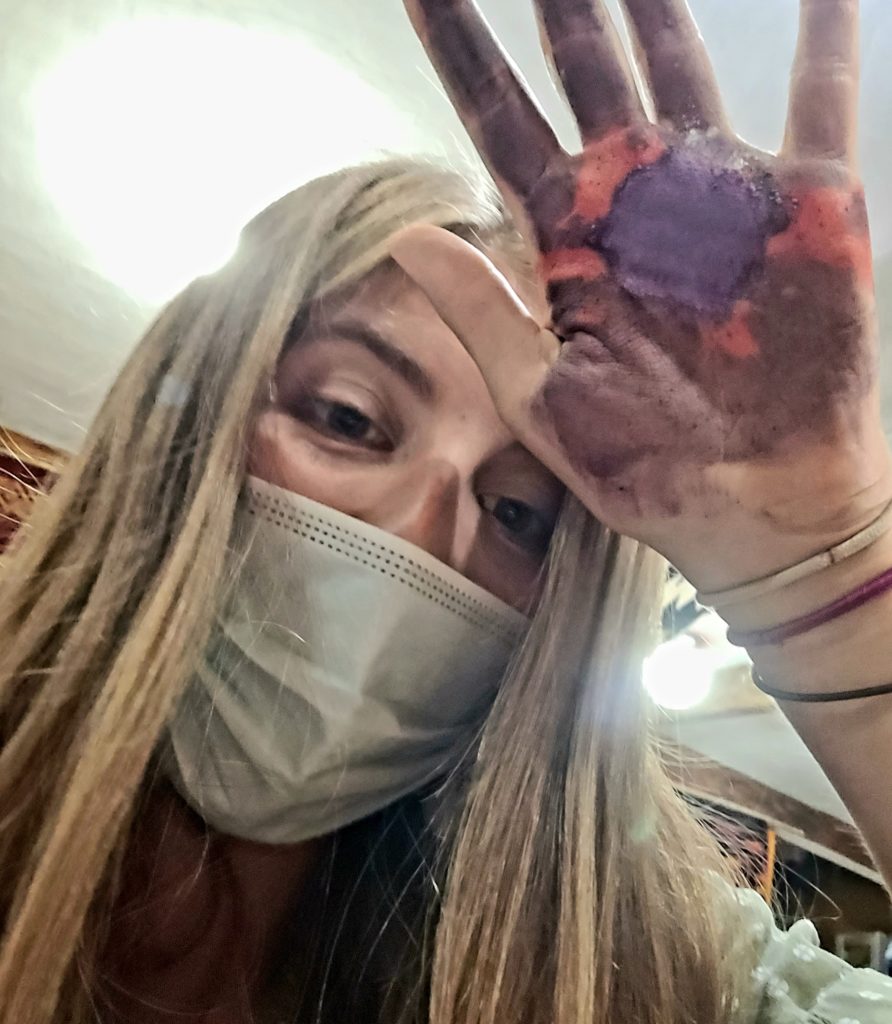
The piles of freshly colored yarn are soon connected to the various looms throughout the workshop. Once the artisan chooses the design, they sketch it out and get to work. Over and under, over and under. Depending on the size of the textile, the project can take anywhere between two to six months to complete. The final products include calla lilies, diamonds, birds, and all other forms of Zapotec iconography becoming quite the statement piece.
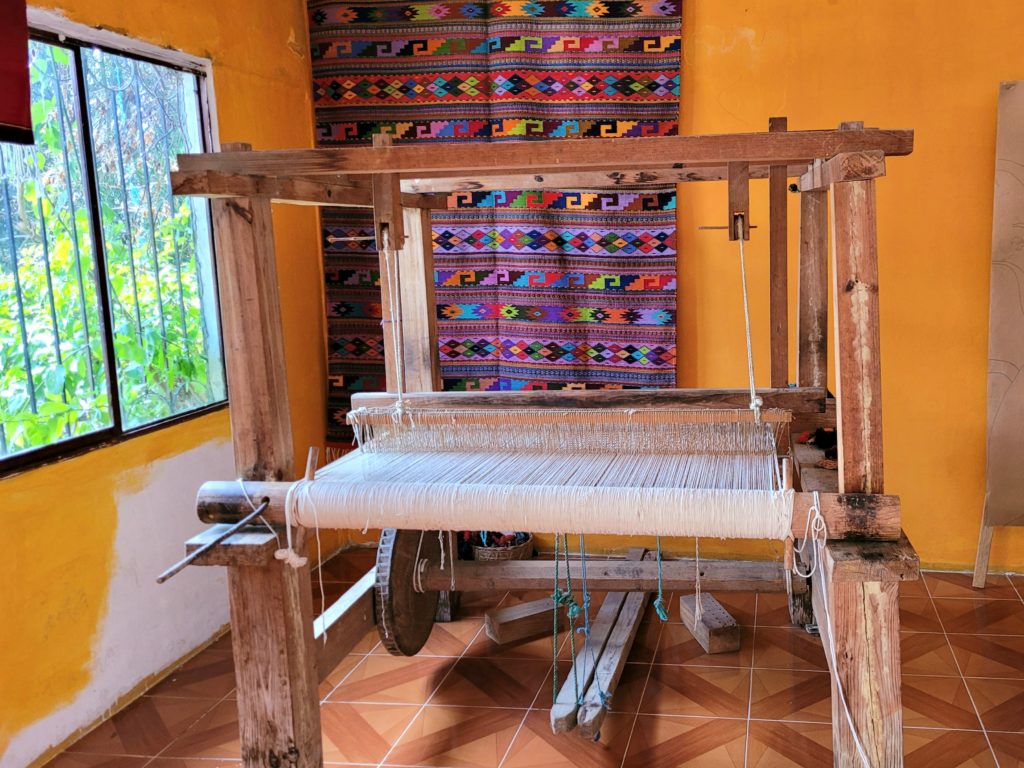
Safe to say I won’t be switching careers to become a weaver anytime soon. However, understanding the time, effort, and significance dedicated to each textile gives one a greater appreciation of the art and its importance to Mexican culture and economy. This workshop, alongside several others throughout Oaxaca, dedicates its work to keeping artisan handicrafts alive. In an ever-globalizing world working to erase and forget indigenous groups, cultural and language preservation is just one of my many forms of resistance.


